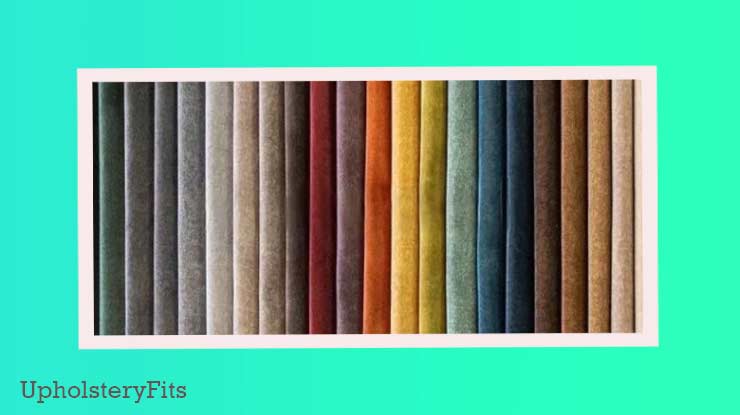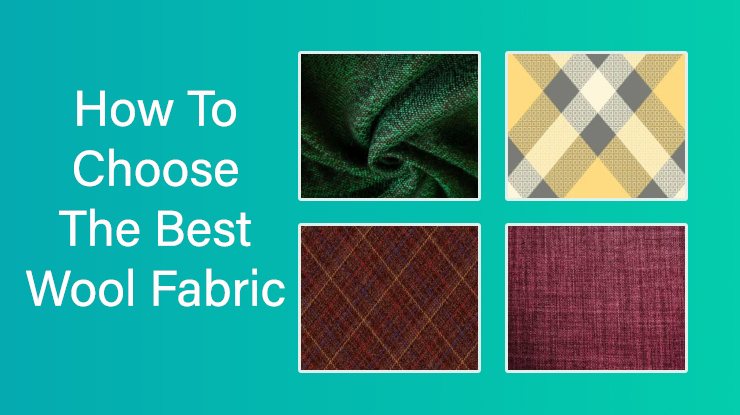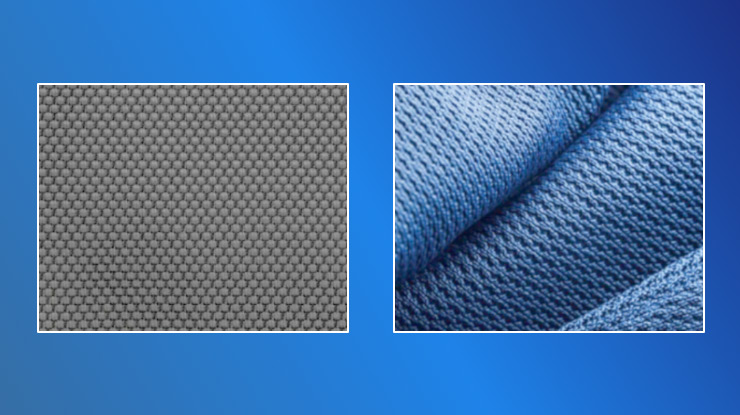Do you think that buying a brand new durable sewing machine will be enough to make the best clothes? Well, I doubt that perception.
Even if you purchase a great and reliable sewing machine, still without the basic knowledge about the stitches you cannot be creative or productive.
So here we are to guide you. You might be surprised to know that there are almost 35 types of stitches that you can make with a sewing machine. However, not all sewing machines give you this many options.
One more myth that revolves around the sewing machine users, is the experience. Most of us believe that anyone who has been using sewing machines knows about the types of stitches. Well, again you are wrong here. I have seen many people who have been using a sewing machine for ages, but they are unaware of the magic they can create.
So in this article, we intend to discuss all the possible unique designs you can create through stitches.
Straight Stitch
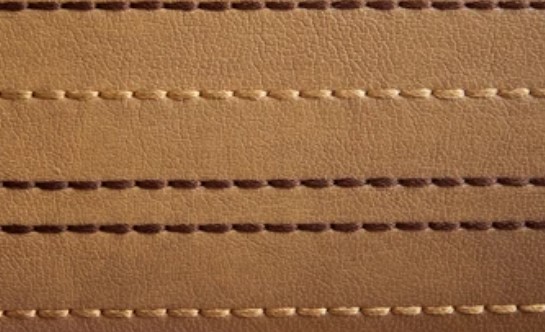
We all are pretty well familiar with this stitch type, and this is the most made stitch by any sewing machine. Many of us, who seldom use a sewing machine, think that it is the only possible stitch we can make with a sewing machine. You can refer to it as the base stitch of any fabric.
It is used to make seams, simple shirts, top stitches, tucks, or darts. All these things are the basics of any stitched cloth.
Maybe this is the reason we all know about the straight stitch it can stitch any side of a shirt or pants. Therefore, people normally don’t take interest in other types of stitches.
The most important feature that comes into play when making a straight stitch is the length of the stitch. The tailor can adjust the stitch length between 0 to 4mm. For tight stitches the minimum stitch length is ideal.
Uses of Straight Stitch
- To do basic stitching.
- For stitching together various parts of a garment.
- For decorative stitches with low tension.
Gathering Stitches
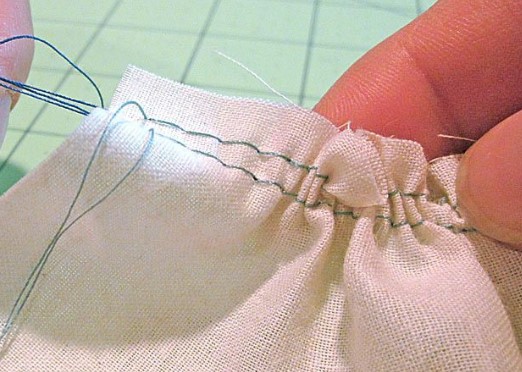
It is the most straightforward and length stitch type. One can consider it as the subtype of straight stitch. It is also referred to as a basting stitch.
To make this stitch, one needs to set the stitch length to the maximum. This stitch is very easy to remove stitch, and tailors usually use it to set the fabric loosely in place. You might have seen these long stitches on your stitched shirt, you can pull off these long threads when the shirt is stitched properly.
They are only to make the entire stitching process smooth and neat.
Uses of Gathering Stitch
- To close the open ends of the cloth.
- To tightly secure the stitches.
Zig-Zag Stitches
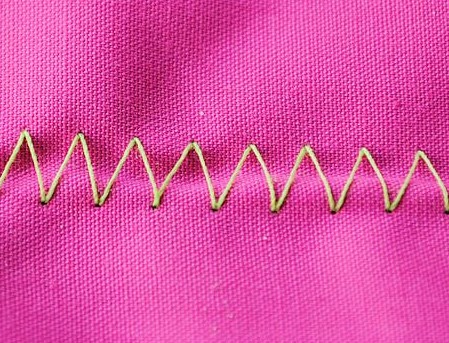
If you don’t know what to do with your fabric but wish to make it a bit fancy. Then the simplest way to do so would be by making zig-zag stitches.
Another use of the zig-zag stitches which we often do is to close the edges of the fabric to avoid any frays. Also, in some cases, when you don’t have a serger machine, then the zig-zag stitch would be the ultimate solution, as it also performs the same function as an over-lock.
To make a zig-zag stitch, you will need to adjust the length and width of the stitch. The higher the width of the stitch, the more horizontally the stitch would go. For tightly woven stitches, you need to keep the length and width as minimum as possible.
However, it should not be so tight that the stitches merge with each other and destroy the look of the fabric.
Uses of Zig-Zag Stitches
- The stitches can be used to make decorative appliques on any fabric.
- To close the edges of the fabric.
- To sew knit hems.
- To sew knits on the seams.
- Can also be used for gathering.
- To sew elastics inside the pyjamas.
Over Edge Stitch
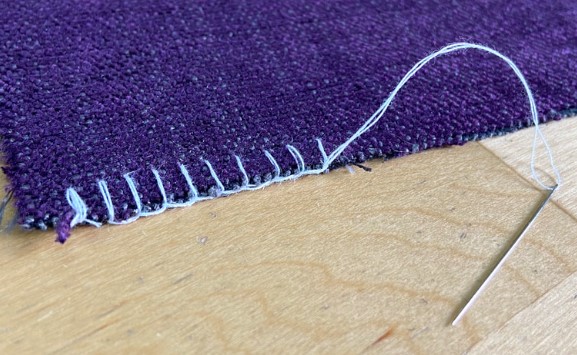
It is also referred to as the overlock stitch and just like the gathering stitch this one is also required to secure the stitched fabric for more elasticity and durability.
Now you might think that for doing so one needs a serger machine. Well, for industrial purposes where you would not want the extra fabric to hang from the sides, a serger machine must be used. However, for domestic purposes, you may use a regular sewing machine with an over-edge stitch function.
As it is a complex stitch, therefore, one might require to set the entire machine differently for it. In many domestic sewing machines, companies give a special foot for this stitch.
Uses of Over Edge Stitch
- To secure the stitched cloth.
- To keep the elasticity of the stitches intact.
- To avoid any tearing.
- For a neat stitch.
Blind HemStitch
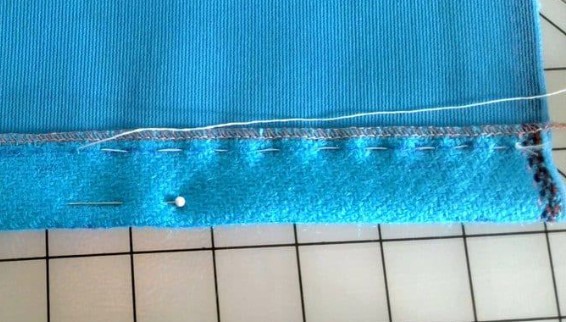
If you are tired of having visible stitches on your favorite designs and clothes, then you are probably unaware of the blind hem stitches.
These are the unique type of stitches that would keep the minimum thread on the font size of the hem. The main thread would be folded inside the fabric while securing the cloth.
These stitches are most useful to create plates, as long threads showing on the plates of a dress will make it look dull and odd. To increase the invisibility factor, it would be better to use a similar colored thread as well.
If you would see these stitches with great care, you might notice that stitches will be similar to the zig-zag stitches, but in a very irregular pattern.
Uses of Blind Hemstitch
- To conceal the extra thread lining.
- To make the dress neat and nice.
Buttonhole Stitches
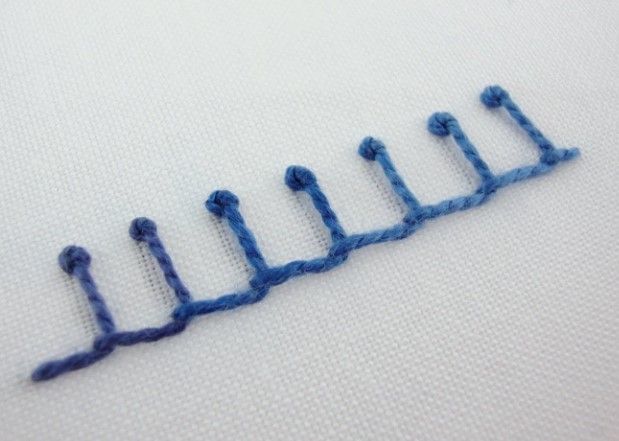
Nearly every dress we make has a buttonhole, and creating one manually would be very hard. Therefore, now we have several sewing machines, be they mechanical or computerized with buttonhole stitches.
For this purpose, machines come with a button-hole foot too. In an automatic machine, you might not need to do anything to create a buttonhole except pressing a single button; however, in a manual machine, you will need to change the foot and set the machine for a buttonhole stitch.
If you have a classical sewing machine, in that case, you will need to create a buttonhole stitch with a zig-zag stitch. To do that, I would need to set the stitch width and length at the minimum level.
Uses of Buttonhole Stitches
- To make button holes.
- To make contrastive decorations.
Scallop Stitches
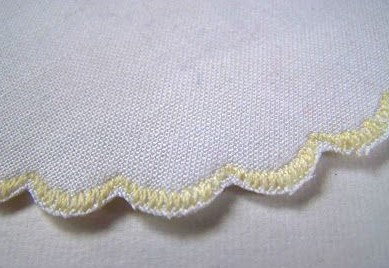
These are decorative stitches. As the name implies, the scallop stitches are for the borders of a frock or a skirt. These are similar to wavy-style decorations.
Now, if you look at the scallop stitches you would feel that making it would be really hard. But, the reality is totally opposite to it.
The first thing you need to create the scalloped edges is cutting. Initially, you will need to draw the scallops on the edges of a cloth. Then stitch on those edges.
In an automatic machine, all you need to do is select the stitch type. However, for manuals, you might need to adjust the machine stitch tension, and the stitch length or width to make the scallop stitches. Then in some cases, there will be a ready-made foot provided in the accessories of the sewing machine.
Uses of Scallop Stitches
- For making nice borders.
- For frocks and skirts edges.
Shell Tuck Stitches
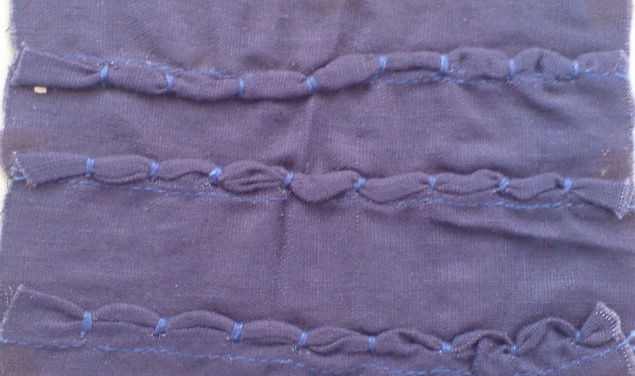
These stitches are also shaped like scallops, but the center of these is empty. This is also a decorative stitch and is often used to make the neckline, and borders of a cloth fancy.
If you are into stitching baby clothes or frocks, then the shell tuck stitches are a must for you.
N advanced sewing machines, they would have provided different feet for this type of tucking. Moreover, the tailor will also need to increase the tension of the thread. So that the shape of the shell stitch must not be obscured, there has to be some elasticity in it.
Unlike the scallop stitch, with an advanced sewing machine, you can select the shell tuck stitch and after creating the stitches, you may cut the fabric later on. In the case of the scallop stitch, the user was required to cut the fabric before filling the curved edges.
Uses of Shell Tuck Stitches
- It’s to decorate a garment.
- To create beautiful edges.
Triple Stretch Stitch
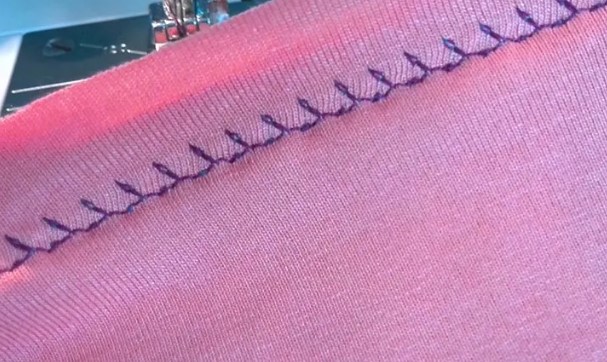
This type of stitch is for the very hard-to-manage and stretchy fabric, that is always at risk of tearing apart. For example, if you are stitching any polyester fabric or viscose, then the triple stretch stitch would be the ultimate solution for the important stitched areas.
As the anime implies the triple stretch fabric is a 3 times stitch going in a parallel direction with each other. The first two stitches are made in one go, while the third one is situated separately.
It goes two steps forward and one step backward. Doing these stitches is hard when using a manual sewing machine. However, one might find it super easy to do so with an automatic electronic machine.
All you need to do is read the manual and read about the triple stretch stitch. In many machines, there is a guide where they have mentioned the number of stitches. Then you will need to adjust the stitch length, as it will increase the elasticity of each stitch and avoid puckering.
Moreover, as the fabric usually used for triple stretch is hard to handle, thus putting more pressure through the presser foot will obscure the end results. So you must take down the presser foot pressure a unit lesser than usual.
Uses of Triple Stretch Stitches
- To enhance the durability of the stitch.
- To secure elastic fabrics in place.
- To avoid any tearing.
Rolled Edge Stitch
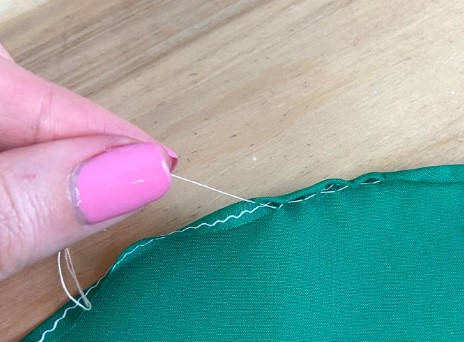
As you can understand from the name of this stitch, it is a unique type of zig-zag stitch that will give a rolled appearance to the edges of a garment. It is often done with the sides and edges of sheets and blankets. In some areas, where women use scarves, they also tend to have clothes with rolled-edge stitches.
For general purposes, the rolled edge stitch can enhance the beauty of a stitch’s fabric by giving a nice and neat edge.
To do so, one will require the hemmer foot and the settings for a zig-zag stitch. It is quite simple to do, just the right adjustment can go a long way. However, setting the stitch width too high can destroy it so try to keep it in a medium range.
Uses of Rolled Edge Stitches
- To decorate the edges of a garment.
- To give a neat look.
Insertion Stitch
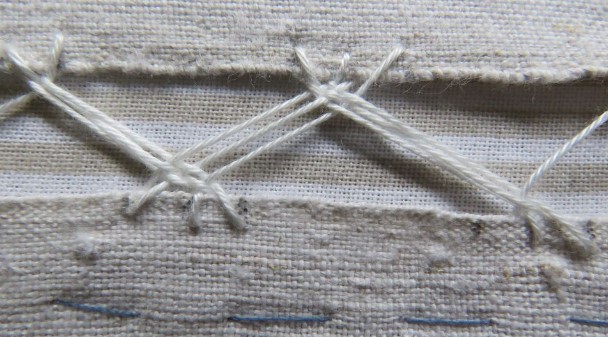
When you need to stitch together two different fabrics, the stitch you do is called insertion or faggoting. You can use any basic foot to do so. But the width and the length of stitches would be adjusted according to your needs. If you want some space between the two fabrics, then you must keep the stitch width more than usual.
Uses of Insertion Stitches
- To stitch together two or more fabrics.
- To stitch laces.
Conclusion
The above-discussed types of stitches are the most common ones. But these are not the only stitches that can be made with a sewing machine. Along with these, there are many others but here we have only mentioned the simple and easy-to-do stitches with a sewing machine.
If you are yet to buy a sewing machine, then we would suggest you get an electronic heavy-duty sewing machine for a fun time. Doing some of these stitches with a classic machine will be a bit hard.
